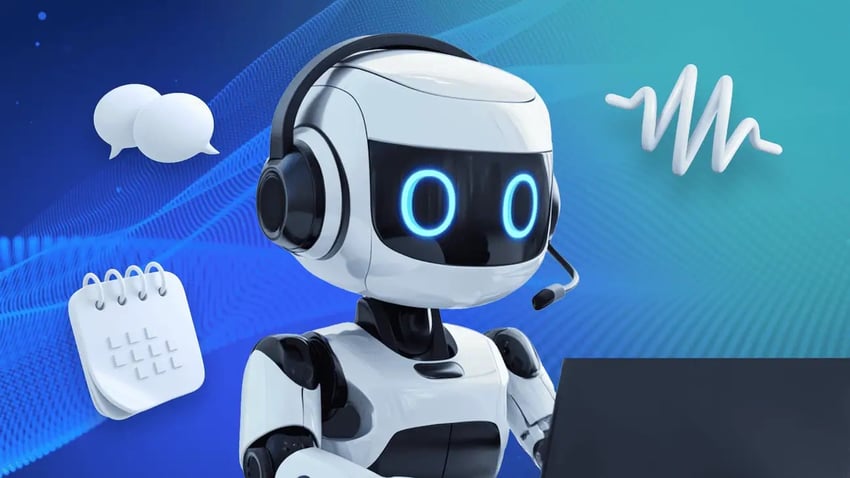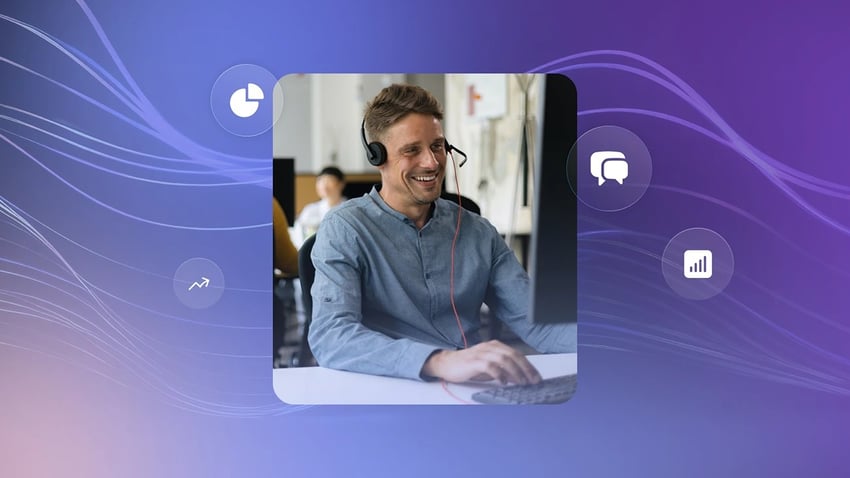When implemented correctly — with guardrails for AI, automated workflows, and an integrated line of business apps — contact center as a service or CCaaS technology has the ability to radically transform your contact center operations.
With the advent of artificial intelligence (AI) in recent years, the prowess of omnichannel over the last decade, and the enhancements in cloud- and internet-based call center software, it’s been proven time and again that CCaaS can be a customer service differentiator.
In this guide, we introduce exactly how your business can benefit from CCaaS features and adoption.
What Is CCaaS?
CCaaS is a software solution that connects all customer contact channels to a single interface. A CCaaS system is the next step up from call centers and allows you to communicate with customers via phone, SMS, or chat, all from one platform.
Much like a virtual call center, the interface allows your agents to make, receive, and manage phone calls. On top of this, they also get access to other contact channels like email, web chat, SMS, and social media. It’s also common to get a unified dashboard for real-time insights into customer engagement and agent performance.
When implemented and adopted well, CCaaS can replace expensive, hardware-heavy call centers with scalable, on-demand infrastructure.

Core CCaaS Technology and Its Business Impact
Omnichannel customer support
When compared to call center technology, omnichannel enables and centralizes voice, email, SMS, social media, and web chat in a single interface.
As a result, you improve context across touchpoints, creating seamless cross-channel experiences for customers. For example, when a customer starts a conversation via live chat then phones you to chase up that query, your omnichannel CCaaS technology retains the context and allows the conversation to flow — with your agent retaining all chat history, pertinent documentation, and information about that customer.
Ideal for ticket management and dealing with busy modern customers who flick between channels, omnichannel reduces the burden on call queues and empowers customers with channel choice.
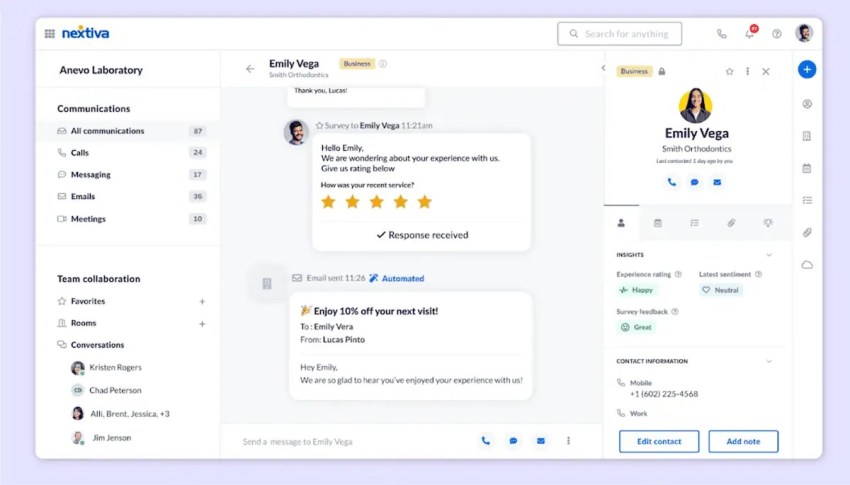
AI-powered automation
Leading CCaaS providers are no strangers to AI and natural language processing these days. The best in the business are using AI to handle common questions via chatbots and interactive voice response (IVR).
The major benefit here is a reduction in average wait times and average handle times (AHT).
Instead of customers calling, waiting for a receptionist, then being transferred to an agent who may or may not be able to handle their call, AI routes calls based on sentiment, priority, or the nature of the call.
This self-service model means agents get freed up from routine queries like opening times and bill payments. This spare time can then be dedicated to more complex, human inquiries like winbacks and technical support.
Agentic AI is also pioneering technological innovation in the contact center industry around fully autonomous, intelligent systems that help customers based on established guidelines.
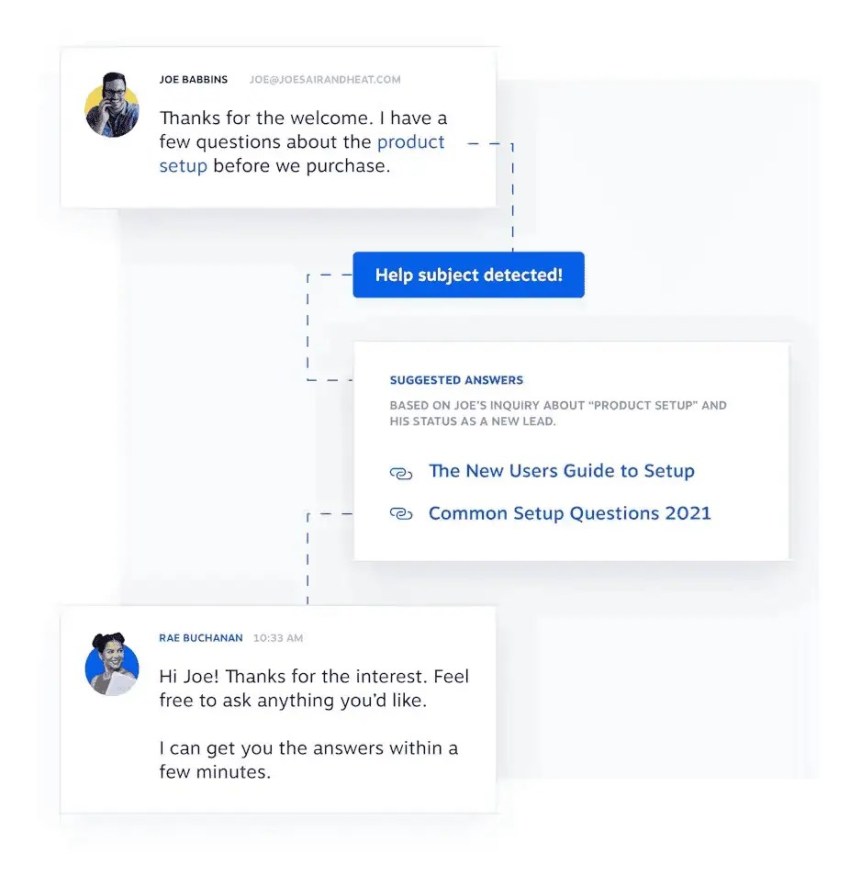
Real-time analytics and dashboards
Contact center software enables precise tracking of key metrics like AHT, CSAT, call volume, and escalation rate. Thanks to real-time performance monitoring and historical reporting, you get access to insights that can drive genuine change (and improvements) in your business.
Aside from basic reporting and trend analysis, you may also get coaching suggestions via agent assist tools. Here, you’ve got a real-time, personal coach live on your agent interface.
When there’s a flashpoint, keyword trigger, or sales opportunity, agents receive in-app suggestions to de-escalate, upsell, etc., based on sentiment and likelihood to convert.
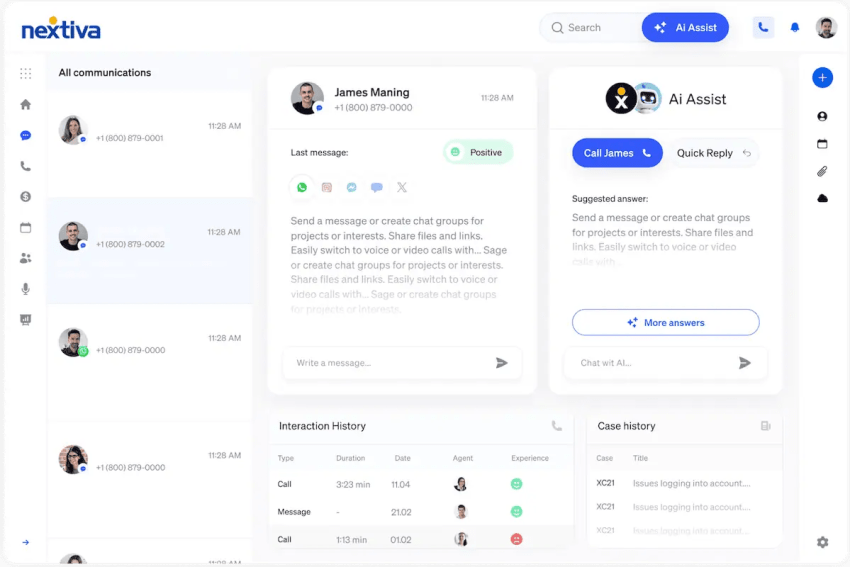
Workforce engagement management
Be it built-in or third-party, the addition of workforce management (WFM) software to your contact center is a smart move for scheduling shifts and monitoring agent productivity. If you have a large number of agents or handle high volumes of voice calls (especially in remote or hybrid environments), you can get alerts for real-time changes that ease staffing issues.
Planning for seasonal change or reacting to unplanned volume shifts is made stress-free thanks to dynamic tracking and suggestions. Combined with the ability for agents to request and exchange shifts, both short and long-term planning time gets considerably reduced.
In some WFM modules, you can also enable performance-based coaching and gamification to boost morale. Simple displays like calls answered, tickets resolved, and sales made promote healthy competition and camaraderie.

Interactive voice response
When you empower customers to input their exact reason for calling, the rest of the process that follows is automatically more streamlined. Instead of speaking to a random agent or receptionist, callers get routed based on their numeric keypad or spoken input.
For example, a customer phoning to report a power failure in their area will call into your business and follow this process:
- The call connects to the IVR and gets greeted with a default message confirming you are aware of localized issues in certain zip codes.
- Customers get presented with options 1, 2, and 3 to press if they’re in the impacted regions.
- If their region is not option 1, 2, or 3, they can choose to say “another area.”
- The IVR recognizes that this customer may have a separate problem and routes them through to the relevant department.
These self-service workflows ease the burden on agents who may otherwise receive repeat callers and those who don’t need one-to-one help, as the issue is already being dealt with at a wider scale.
When you integrate your IVR with CRM data, you can personalize the experience callers receive, too. For example, caller ID information syncs with Salesforce, HubSpot, Dynamics, etc. to look up recent transactions or tickets and suggest a likely resolution or requirement before the customer queues for and speaks to an agent.
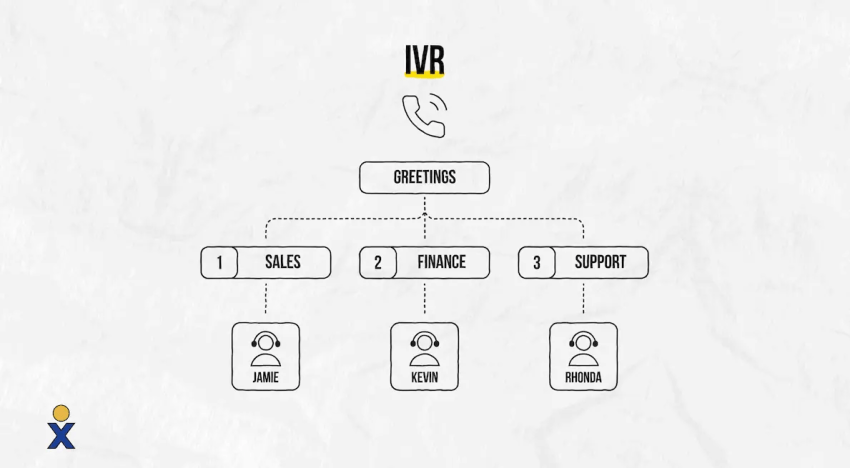
Automatic call distribution (ACD)
Using preloaded configurations, ACD routes calls to the most suitable agents based on skill, workload, or availability. This has a positive impact on both agent workload and the customer journey.
There are six key ACD distribution methods to choose from:
- Round robin
- Talk time-based
- Fixed order
- Uniform
- Simultaneous
- Weighted
By reducing queue times and improving first-contact resolution, both parties (agent and customer) get a better experience from your business. When considering the long-term impact on both agent balance and customer efficiency, ACD is one of the simplest innovations that saves the most time in a contact center. CCaaS technology at its finest.
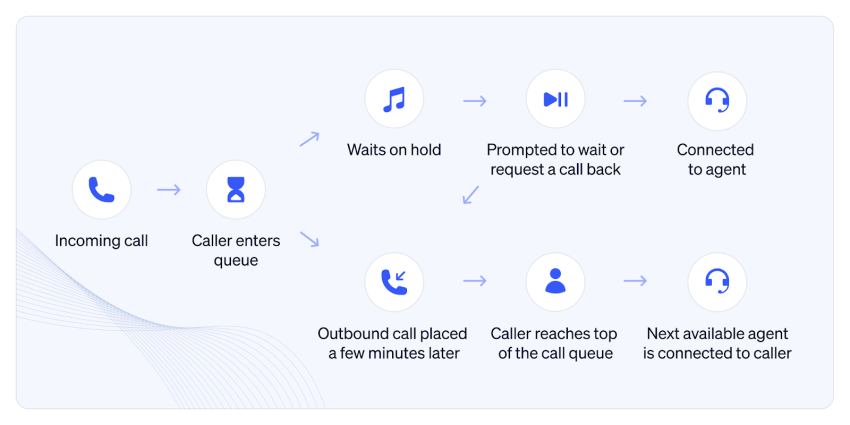
How CCaaS Software Improves Your Customer and Agent Experiences
Technology, when combined with appropriate use, coaching, and support, can be such a great enabler of continuous optimization. In contact centers, we’re only just getting started. As AI becomes more prevalent in CCaaS and we learn to find the perfect balance between human and AI input, the art of the possible looks like huge efficiency gains, unprecedented flexibility, and brilliant customer experiences.
Enhanced customer satisfaction
- Omnichannel support ensures consistency, regardless of how customers reach out.
- Personalized self-service, call context, and sentiment-based routing reduce friction.
- Faster resolutions lead to higher CSAT and lower churn.
Scalable and cost-effective
- There’s no need for heavy upfront investments or maintenance costs.
- Businesses can scale user licenses, functionality, and support as needed.
- Pay-as-you-go contact center pricing models are ideal for seasonal or fluctuating demand.
Efficient call routing and workflows
- Automated workflows streamline everything from FAQs to escalations.
- AI predicts intent and routes accordingly to the right digital channel or agent.
- Agent workloads and response times are optimized.
Better insights into customer behavior
- Real-time dashboards surface sentiment, interaction history, and journey analytics.
- Transcribed call recordings help companies understand where friction occurs and how to fix it.
- Proactive engagement boosts loyalty and retention.
Flexibility for remote and hybrid teams
- The cloud-based nature means agents can work from anywhere.
- Uptime, continuity, and compliance are maintained even during disruptions.
- The global talent pool expands to attract highly skilled agents and subject matter experts.
How to Choose the Right CCaaS Solution
When searching for a perfect contact center solution, it’s important to put your unique needs first. While the market is full of options, it can become overwhelming, and you may find yourself lost in the noise.
Use this tried and tested checklist to ensure you don’t get distracted by AI hype and features that fall outside your must-haves.
Evaluate your communication channels
- What do you already have that is a minimum requirement to replicate?
- What would speed up customer interactions?
- Which channels would ease the burden on your call queues?
Look for integrations to unify customer data across touchpoints
- Check for integration with common CRM systems like Salesforce, Dynamics, and Hubspot.
- Will you need an open API to build your own customer workflows and bots?
- Are there other line-of-business apps you need to integrate (email, HR, UCaaS, ticketing, etc.)?

Ensure the platform offers AI capabilities for routing, self-service, and analytics
- How mature is your CCaaS provider’s offering?
- Are there case studies that match your industry/setup?
- Is there supporting training material to help with continuous optimization?
Prioritize security and compliance (SOC 2, HIPAA, PCI-DSS)
- Does your chosen CCaaS solution hold the necessary compliance accreditations to operate in your industry?
- Can you meet strict guidelines while operating in an efficient, native workflow?
- Who in your business needs to be engaged to ensure compliance from day one?
Check the provider’s uptime
- 99.999% is now the CCaaS expectation, rather than a USP.
- What is the agreement for service credits if 99.999% isn’t met?
- How does your CCaaS provider account for disaster recovery and unplanned downtime?
Confirm scalability for adding seats, channels, or features on demand
- Is there a process for scaling agent licenses up and down (ask about minimum spend)?
- What’s the SLA for adding new users to deal with seasonality or unexpected demand?
- How long must you wait for key features and upgrades to be rolled out to your business once announced?
Factor in ease of use and onboarding support
- Is your provider versed in supporting organizations of your size?
- Are there easily accessible self-service portals and videos for agent training?
- What’s the process for raising issues with early and ongoing problems?
Nextiva Is Built for Modern CX Teams
There’s no doubting the potential of CCaaS technology for any business with a customer-facing team. The question is more around which platform is the best match for your needs.
With Nextiva, you get inbound telephony, outbound voice, video, chat, SMS, and email in one clean interface. Agents get access to everything they need in a single pane of glass thanks to CRM integration and built-in, proactive AI agent coaching.

Before customers reach your agents, you can preconfigure smart IVRs, algorithm-based call queues, and routing profiles. Throughout the journey, you’ve got smart analytics providing real-time insights and compiling historical reports that help you power the future of your business.
As a cloud-based solution, it has no overhead for your IT team and nothing to manage on-premises. Instead, you get a rapid deployment with minimal configuration required. Agents get access in minutes, and supervisors are seeing data from day one.
From 10 agents to 10,000, Nextiva scales and grows with your business. We’ve proven time and again that technology plus people is a winning combination, and we’d love for you to experience this, too.
Whether you’re a patient-facing health care team like Ontrak Health that has increased conversions, enabling it to hit quarterly enrollment targets, or a multinational BPO like Emergia that has increased its effective contact rate by 10% and decreased its ineffective contact rate by 10%, businesses of all walks of life can benefit from Nextiva’s CCaaS.

“The generative AI knowledge base from Nextiva has redefined Ontrak’s ability to assist our members.”
— Brianna Brennan
Ready to take your customer experience to new heights? Check out Nextiva CCaaS.

















 Customer Experience
Customer Experience 







